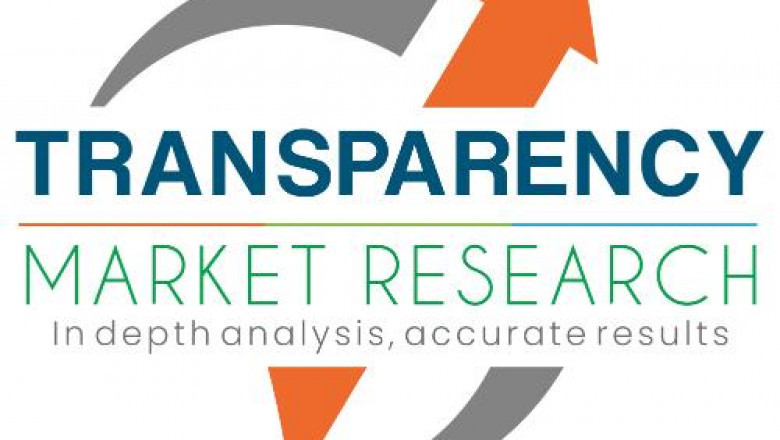views
The global soft seated butterfly valves market is undergoing a significant transformation driven by industrial growth, urbanization, and the rapid adoption of advanced technologies. Valued at US$ 4.9 billion in 2024, the market is projected to expand at a compound annual growth rate (CAGR) of 5.6% from 2025 to 2035, ultimately reaching US$ 8.8 billion by the end of the forecast period. This expansion is rooted in the growing need for efficient flow control solutions across critical industries such as chemical processing, water treatment, oil and gas, and HVAC systems.
What are Soft Seated Butterfly Valves and Why Are They Gaining Traction?
Soft seated butterfly valves are a type of quarter-turn valve designed for low to medium pressure and temperature applications. They feature a soft, elastic seat—commonly made from materials like PTFE, EPDM, or VITON—that ensures a tight seal, reduces wear and tear, and absorbs vibrations. This makes them particularly valuable in systems where leakage control, durability, and cost-efficiency are crucial.
These valves are often used in chemical, pharmaceutical, food and beverage, and water treatment applications due to their corrosion resistance and ease of maintenance. Soft seated valves also allow for bi-directional sealing, quick actuation, and simple replacement of internal components.
Market Drivers: Urbanization, Industrialization, and Technological Innovation
The market’s growth is being significantly influenced by rising urbanization and industrialization, particularly in emerging economies. Expanding urban centers demand advanced infrastructure for water distribution, sewage management, and power generation—all of which benefit from the integration of soft seated butterfly valves.
In addition, technological advancements are reshaping how valves operate. Smart valves embedded with sensors, actuators, and IoT technologies now enable real-time monitoring, remote operation, and predictive maintenance. This not only reduces operational downtime but also enhances system performance and safety.
Developments in material science are further boosting the market. Newer elastomers and polymers offer better temperature resistance, improved strength, and higher durability, making these valves more versatile across applications.
Applications Across Growing Industries
- Chemical Processing: Perhaps the largest application segment, chemical plants use soft seated butterfly valves extensively due to their resistance to corrosive fluids and capability for precise flow control.
- Water Treatment: As water scarcity and pollution drive infrastructure investments, demand for reliable valve systems in both potable water and wastewater treatment is increasing.
- Oil & Gas: These valves play a role in fluid control for exploration, refining, and distribution, although they are typically used where high-pressure resistance isn’t required.
- HVAC and Power Generation: These sectors rely on the rapid, efficient control provided by butterfly valves to optimize energy efficiency and operational reliability.
Regional Insights: Who Leads the Market?
North America currently dominates the global soft seated butterfly valves market, holding around 40% of the total share. This leadership is supported by its well-established chemical and oil & gas sectors, as well as stringent environmental regulations that promote the use of advanced, efficient flow control devices.
Asia-Pacific is expected to be the fastest-growing regional market due to industrialization in China, India, and Southeast Asia. Increasing investment in petrochemicals, water infrastructure, and manufacturing is expected to fuel strong demand for reliable and cost-effective valve solutions.
Meanwhile, Europe maintains a stable demand driven by regulatory mandates, well-developed pharmaceutical and food sectors, and a continuous push for energy efficiency and sustainability.
Competitive Landscape and Innovations
Several key players are leading the charge in innovation and market penetration:
- Emerson Electric Co. and Flowserve Corporation are prominent for their highly reliable valves and focus on automation.
- Bray International is widely recognized for their lightweight and maintenance-friendly designs.
- Companies like IMI Process Automation and Valworx are introducing new product lines tailored to industry-specific needs such as sanitary processes and high-temperature applications.
For instance, Valworx’s 2024 launch of its sanitary butterfly valves demonstrates a targeted strategy to tap into the food and beverage industry, which demands hygienic and cost-effective solutions.
Conclusion: A Market Poised for Transformation
The soft seated butterfly valves market stands at the intersection of industrial growth, smart technology adoption, and environmental responsibility. With its predicted expansion to US$ 8.8 billion by 2035, the industry is not just evolving in size but also in technological sophistication and application versatility.
As industries continue to demand better control, improved efficiency, and reduced environmental impact, soft seated butterfly valves will remain central to modern infrastructure and process systems. Companies that innovate in materials, design, and smart capabilities are likely to lead the market into its next phase of evolution.



















![Fitness Technology Market [2025-2033] is Growing Rapidly at Upcoming](https://timessquarereporter.com/public/upload/media/posts/2025-04/15/fitness-technology-market-2025-2033-is-growing-rapidly-at-upcoming_1744711056-s.jpg)


Comments
0 comment